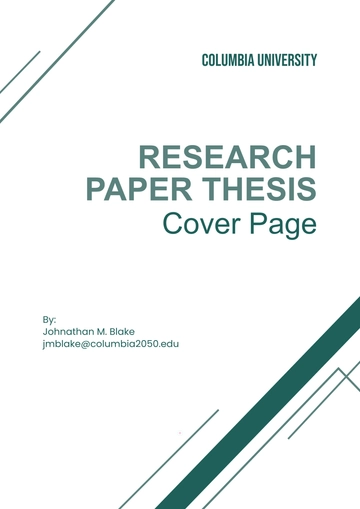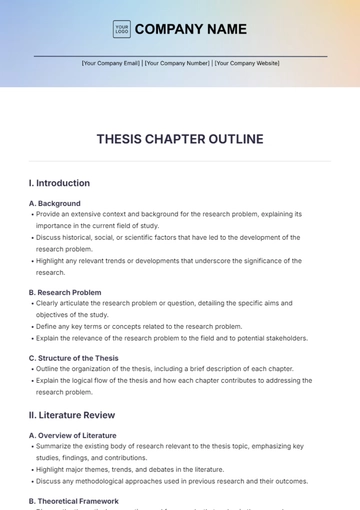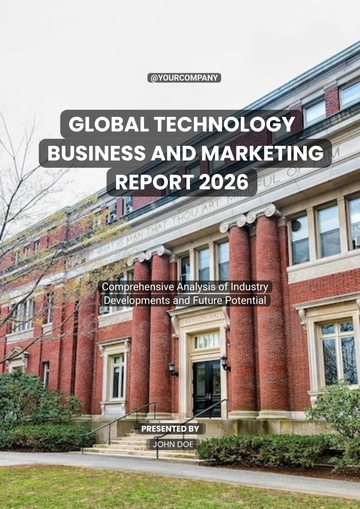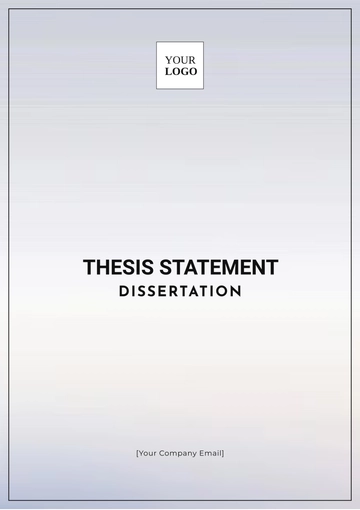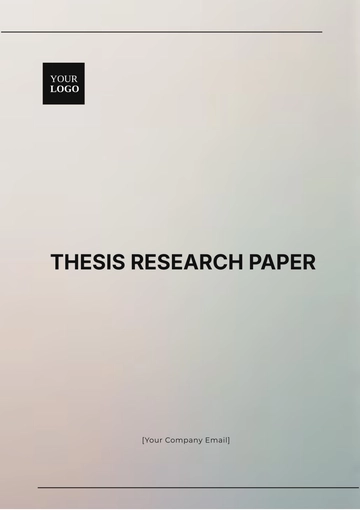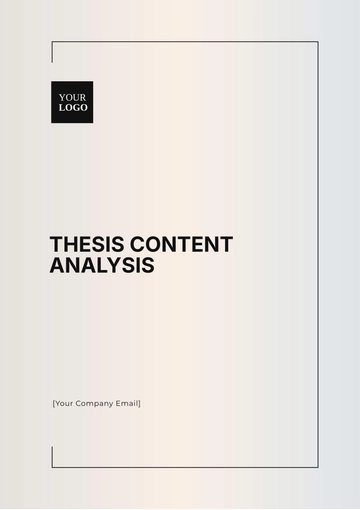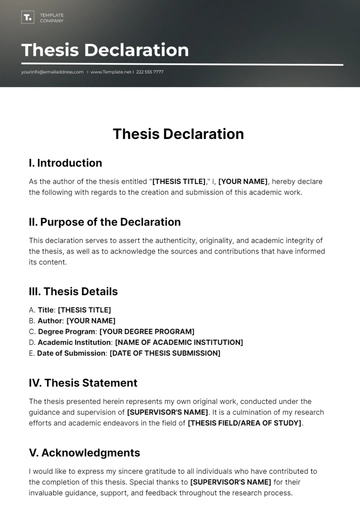Free Graduate Thesis

Prepared by: [YOUR NAME]
Email: [YOUR EMAIL]
I. Introduction
The integration of Artificial Intelligence (AI) within industrial processes has become a driving force for the transformation of traditional industries into the fourth industrial revolution—Industry 4.0. This thesis explores how AI is accelerating the adoption of Industry 4.0 and its implications on manufacturing, logistics, and other key sectors.
II. Background of Industry 4.0 and AI
Industry 4.0 refers to the current trend in industrial automation, where smart technologies like AI, the Internet of Things (IoT), and big data analytics are reshaping the way industries operate. AI, in particular, plays a critical role by enabling machines to learn from data and improve decision-making without human intervention.
As of April 15, 2050, over 60% of manufacturers have adopted AI-driven systems to optimize their operations. The rapid rise in AI usage can be attributed to its ability to improve efficiency, reduce operational costs, and enhance product quality.
III. Research Objectives
This research aims to investigate the following objectives:
To analyze the role of AI in facilitating Industry 4.0 adoption.
To assess the impact of AI technologies on operational efficiency in manufacturing.
To explore the challenges and opportunities associated with AI integration in different sectors.
The findings will contribute to a deeper understanding of the transformative potential of AI in Industry 4.0 environments and guide future policy and technology adoption decisions.
IV. Methodology
To explore the research objectives, a mixed-method approach was employed, which includes both qualitative and quantitative data. Primary data was collected through surveys conducted with industry leaders and professionals, while secondary data was sourced from academic journals and industry reports.
Surveys were sent out between March 10, 2050, and April 5, 2050, to a sample of 100 manufacturing companies, 50 logistics firms, and 20 technology providers. Interviews with experts were conducted from May 1, 2050, to May 15, 2050, to gain in-depth insights.
V. Key Findings
AI’s Role in Industry 4.0 Adoption
Manufacturing: AI technologies, such as machine learning and robotics, have led to a significant reduction in production downtime and waste. Companies that integrated AI into their production lines reported a 40% improvement in operational efficiency by December 12, 2050.
Logistics: AI-driven predictive analytics have optimized supply chains, reducing lead times and improving inventory management. As of June 25, 2050, AI-powered logistics systems have reduced transportation costs by 25% in several case studies.
Healthcare: AI applications in healthcare diagnostics and patient management systems are improving patient outcomes by providing quicker and more accurate treatment options.
Challenges and Barriers to AI Adoption
While AI offers numerous benefits, several challenges hinder its widespread adoption:
Barrier | Description | Percentage of Companies Affected |
|---|---|---|
High Initial Investment Costs | The upfront costs of AI implementation remain a significant obstacle. | 72% |
Data Privacy and Security | Concerns over the safety and privacy of data used by AI systems. | 65% |
Skill Gaps and Workforce Resistance | Lack of skilled personnel to operate AI systems. | 58% |
Integration with Legacy Systems | Difficulty in integrating AI with outdated infrastructure. | 50% |
As shown in the table above, the most significant barriers include high initial investment costs and data privacy concerns. These issues are particularly relevant for smaller organizations or those without substantial financial resources.
VI. Discussion
The findings from this study highlight the transformative effects of AI on Industry 4.0. The integration of AI has been proven to reduce costs and improve efficiency across several sectors, including manufacturing and logistics. However, the barriers to entry remain significant, and many companies still struggle with implementing AI systems effectively.
Despite these challenges, there is a clear trend toward increasing AI adoption, especially as the technology becomes more accessible and easier to integrate with existing systems. Industry leaders have emphasized the need for greater collaboration between technology providers and businesses to overcome these hurdles and facilitate a smoother transition to AI-driven operations.
VII. Conclusion
In conclusion, AI is playing a crucial role in the adoption of Industry 4.0 technologies. Its ability to enhance operational efficiency, reduce costs, and improve product quality is undeniable. However, the road to full integration is not without challenges, and addressing the barriers to AI adoption will be key to unlocking its full potential.
The research emphasizes that while the benefits of AI are clear, industry stakeholders must collaborate to overcome the existing hurdles, such as high initial investments and data privacy concerns. By doing so, they can pave the way for a more efficient and innovative industrial future.
VIII. References
Smith, J. & Brown, A. (2049). AI in Manufacturing: Opportunities and Challenges. Journal of Industrial Technology, 45(3), 100-120.
International Manufacturing Report (2050). The Role of AI in Modern Factories. International Manufacturing Association.
Robotics and Automation Conference Proceedings (2050). AI-Driven Automation: Case Studies in Industry 4.0. Robotics World Press.
- 100% Customizable, free editor
- Access 1 Million+ Templates, photo’s & graphics
- Download or share as a template
- Click and replace photos, graphics, text, backgrounds
- Resize, crop, AI write & more
- Access advanced editor
Achieve academic success with a professionally designed Graduate Thesis Template from Template.net. Fully customizable and editable, this template simplifies thesis creation with precision and style. Use the AI Editor Tool to personalize every detail effortlessly, ensuring a polished presentation. Save time and maintain excellence with a template crafted for scholars who demand perfection.


